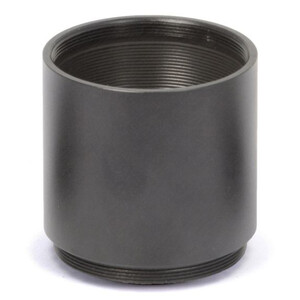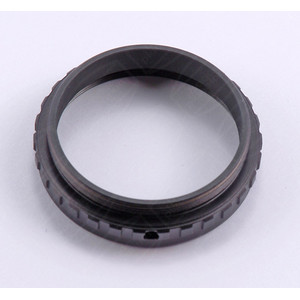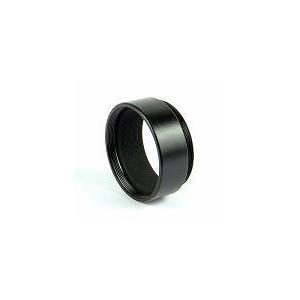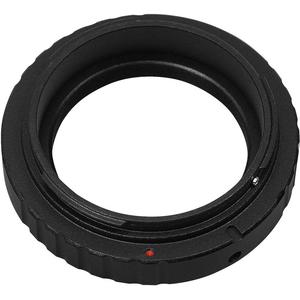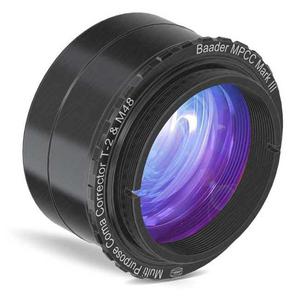- fully coated apochromatic lens system
- 10 times higher line resolution as the world's best projection eyepieces
- 90mm image field for medium format cameras
The multiplying factor can be adjusted between 3X and 8X, depending on the projection distance used. The design focuses on the four times increase in the focal length. A completely sharp image is available at a 90mm image size. The on-axis sharpness, also at extensions of 15X, is only limited by the optics of the telescope itself.
In order that the FFC works perfectly at all magnifications, it is necessary to keep a predefined distance to the original primary focus.
Our expert comment:
Lenses made of genuine calcium fluorite crystal are integrated into the FFC's optical system. CaF2 has extreme refractive properties that allow the construction of a lens system that delivers incredible sharpness across a huge spectral range. No other Barlow lens design can come close to delivering the same sharpness across a comparably large image field.
The disadvantage of such a complex optical system is its sensitivity to temperature changes.
CaF2 must not be exposed to sudden or very large temperature changes. Consequently, this optics must not be used for solar projection photography, as the extreme and rapid temperature changes can cause the fluorite lenses to shatter.
The FFC should also not be subjected to rapid temperature changes. No one should use a fluorite lens system at minus 20°C and then bring it into a living room at 20°C.
All CaF2 optics need time to adjust to the temperature. To achieve this, you can, for example, place the optical system in an insulated box outside. Leave it in this box for about an hour to adjust to the temperature. Leave the box closed, but outside. After use, store the FFC in the same box and leave it there so that it can warm up slowly when you bring it back into the house. Leave it in the closed box for at least an hour before opening it so that any moisture can evaporate.
(Stefan Taube, source: Baader)
